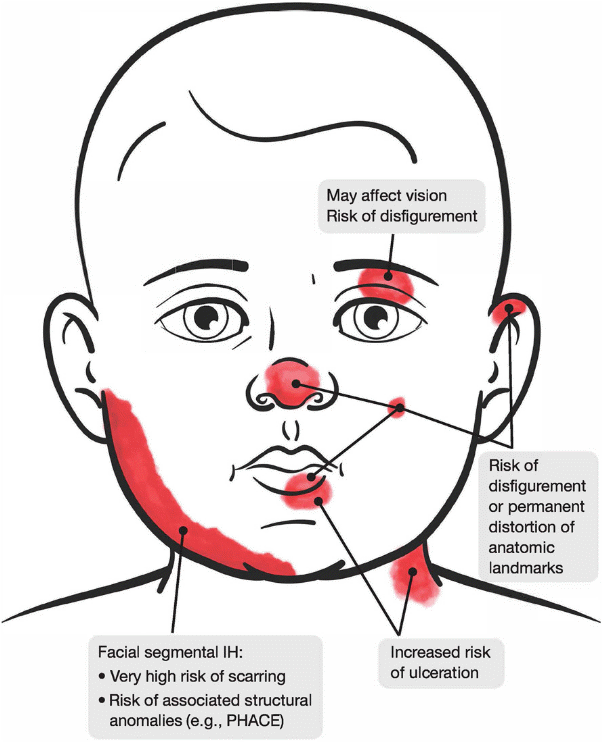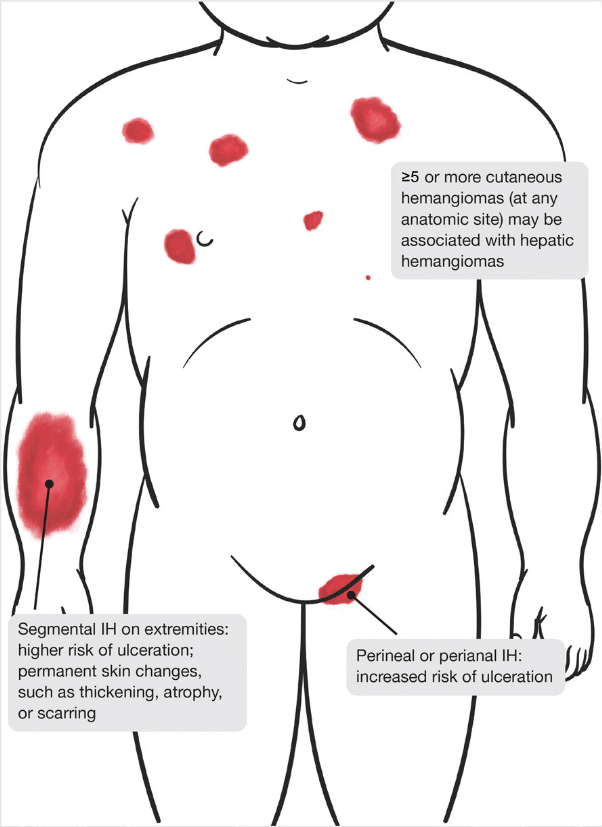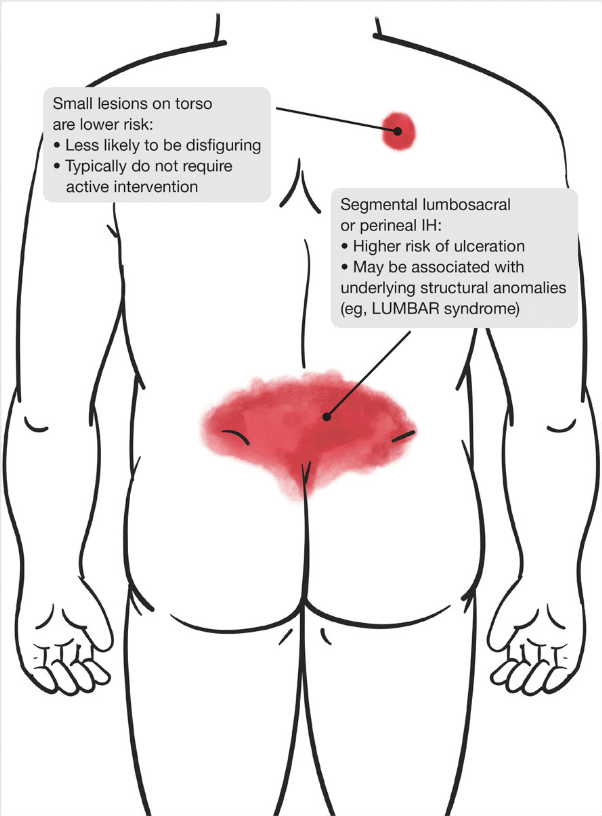CLINICAL PRACTICE GUIDELINE
Infantile Hemangiomas
Key Concepts:
- Infantile hemangiomas (IHs) occur in as many as 5% of infants, making them the most common benign tumor of infancy.
- Most IHs are small, innocuous, self-resolving, and require no treatment.
- However, because of their size or location, a significant minority of IHs are potentially problematic.
- These include IHs that may cause permanent scarring and disfigurement (eg, facial IHs), hepatic or airway IHs, and IHs with the potential for functional impairment (eg, periorbital IHs), ulceration (that may cause pain or scarring), and associated underlying abnormalities (eg, intracranial and aortic arch vascular abnormalities accompanying a large facial IH).
- The most rapid and significant growth occurs between 1 and 3 months of age and growth is completed by 5 months of age in most cases.
- Although IHs involute, this process may be incomplete, leaving permanent skin changes that may be life altering. This is especially true for IHs that are thick.
- Because many IHs leave behind permanent skin changes, there is a window of opportunity to treat higher-risk IHs and optimize outcomes.
- Early intervention and/or referral (ideally by 1 month of age) is recommended for infants who have potentially problematic IHs.
- When systemic treatment is indicated, propranolol is the drug of choice at a dose of 2 to 3 mg/kg per day.
- Treatment typically is continued for at least 6 months and often is maintained until 12 months of age (occasionally longer).
- Topical timolol may be used to treat select small, thin, superficial IHs.
- Surgery and/or laser treatment are most useful for the treatment of residual skin changes after involution and, less commonly, may be considered earlier to treat some IHs.

FIGURE 1. High-risk IHs involving the face and neck.

FIGURE 2. High-risk IHs involving the trunk, extremities, and perineum

FIGURE 3. IHs involving the posterior trunk.
TABLE I. Summary of Comparative Efficacy of Various Treatments for IHs

(Abstracted from: Krowchuk DP, Frieden IJ, Mancini AJ, et al. Clinical Practice Guideline for the Management of Infantile Hemangiomas. Pediatrics. 2019;143(1):e20183475)

